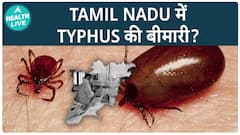Turns out, brain activity is inherited

Washington D.C. [USA], Nov 3 (ANI): A team of researchers has found that brain activity is inherited, which may have implications for future treatment approaches for conditions such as attention-deficit/hyperactivity disorder (ADHD) or autism.
Every person has a distinct pattern of functional brain connectivity known as a connectotype, or brain fingerprint. The Oregon Health & Science University study concluded that while individually unique, each connectotype demonstrates both familial and heritable relationships.
"Similar to DNA, specific brain systems and connectivity patterns are passed down from adults to their children," said principal investigator Damien Fair. "This is significant because it may help us to better characterize aspects of altered brain activity, development or disease."
Using two data sets of functional MRI brain scans from more than 350 adult and child siblings during resting state, Fair and colleagues applied an innovative technique to characterize functional connectivity and machine learning to successfully identify siblings based on their connectotype.
Through a similar process, the team also distinguished individual sibling and twin pairs from unrelated pairs in both children and adults.
Lead author Oscar Miranda-Dominguez said that this confirms that while unique to each individual, some aspects of the family connectome are inherited and maintained throughout development and may be useful as early biomarkers of mental or neurological conditions.
Overall, the connectotype demonstrated heritability within five brain systems, the most prominent being the frontoparietal cortex, or the part of the brain that filters incoming information. The dorsal attention and default systems, important for attention or focus and internal mental thoughts or rumination, respectively, also showed significant occurrences.
Fair noted that these findings create more opportunity for personalized and targeted treatment approaches for conditions such as ADHD or autism.
The results are published in Network Neuroscience. (ANI)
This story has not been edited. It has been published as provided by ANI
Trending News
Top Headlines































